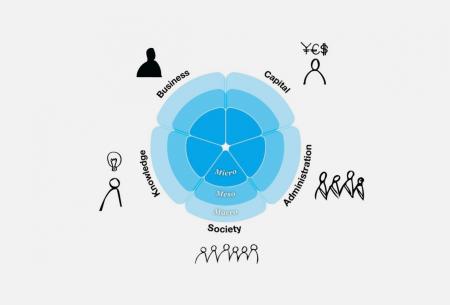
Resource description:
Discussion tool to map stakeholder interests and explore ways of negotiating social complexity.
Author/Contact:
TURAS
Expert contact: Stephan Kampelmann
Requirements:
- The Penta-helix tool helps to analyse a mix of stakeholders but focuses on those which have a role in change; those that may be actively involved in the project (actors) and others that are involved due to the nature of the project (interest groups) such
- Local authorities involved in planning processes (e.g. urbanism departments or urban renovation teams) could easily pick up this tool to improve the way they deal with the challenges of involving multiple stakeholders and conflicting interests in Transiti
Advantages:
- The Penta-Helix model helps to unlock or map conflicts of interest while allowing stakeholders to understand the importance of alliances and team playing. In order to avoid friction in collaborative strategy development processes, being clear about each o
- Main outcomes: knowledge/data, stakeholder integration, process innovation.
Constraints:
- A crucial component of developing Integrated Transition Strategies is the engagement of a wide variety of different stakeholders. Among the challenges of including a diverse set of stakeholders in Transition Strategies is the negotiation of often conflict
Uses of this resource:
Stakeholders generally prioritise an interest over others. Career opportunities, wealth and other personal or organisational interests are generally the strongest incentives motivating individual stakeholders, but there are also endemic interests that have to be taken into account. Stakeholders that are driven by too many interests can disrupt a project by not being clear about their objectives. In addition to systemic conflicts of interest, stakeholders bring personal or institutional friction that can stifle building constructive relationships. The diversity of perspectives and interests needs to be acknowledged and effectively channelled into a constructive dynamic. This is the starting point of the Penta-Helix Stakeholder Management.
Additional information:
WHO SHOULD BE INVOLVED?
FACILITATORY (PUBLIC) BODIES:
strategic planning department; community development department; planning and development department; urban regeneration department
LOCAL TASK FORCE:
local or regional authority; community group; business
SUITABLE FOR:
urban region; (sub-)urban communities
MAIN NECESSARY RESOURCES ARE:
public institutional set-up; political back-up; community trust; expert knowledge
Licence:
- Free, no licence
Development stage:
- Full, working product